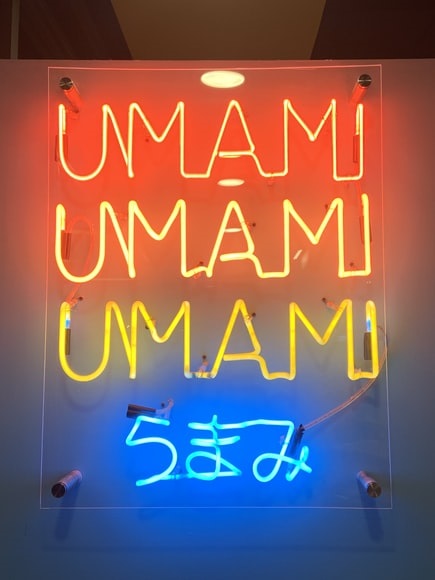Umami is a Japanese word popularised in the 2010s to describe savouriness. Therefore we call Umami: The Fifth Taste!
What is Umami?
Our tastebuds are sensory organs on our tongue that allow us to experience the delicious world of food, and up until 1990, we only recognised four tastes: sweet, salty, sour and bitter. Umami was finally recognised as the fifth taste in 1990 at the International Symposium on Glutamate, but gained popularity as the food world and particularly, TV cooking and celebrity chefs, gained popularity in the late 2000s.

What does Umami taste like?
Because we’re used to our four basic tastes (sweet, salty, sour and bitter) it may be a little strange to recognise a fifth taste, but rest assured you’re already very familiar with it! Umami is a savoury, meaty flavour that is associated with cured, slow cooked, fermented food and foods like burgers, cooked mushrooms, cured meats, and is prominent in Asian food because of the presence of flavour enhancers like soy sauce and oyster sauce. The common ground? It’s called “free form glutamate” and is a kind of amino acid that produces this flavour!
Umami-Rich Foods
Many foods fall under the category, and pairing them with certain cooking methods allow for this mouth-filling taste to be enhanced. Here’s a list of the most common umami-rich foods:
– Tomatoes
– Artichokes
– Mushrooms
– Asparagus
– Seaweed
– Kelp
– Beef
– Veal
– Shellfish (all the flavour lies in the shell!)
– Salty fish like sardines, mackerel, anchovies

How to Add Umami to A Dish?
Use the list above and get creative! Keep in mind that “low and slow” promotes the umami flavour – find ways to concentrate the flavours and don’t be shy to mix and match! A good rule of thumb is to allow each step and each ingredients to cook and “bloom” before adding the next one. Taste and season as you go!
– Tomato paste for depth of flavour
– Soy sauce for umami and saltiness
– Dried and rehydrated mushrooms for meatiness
– Mushroom powder
– Shrimp paste (a little goes a long way)
– Meat or vegetable broth

This post was written by Canadian-born food storyteller Christelle Terzian. She has a Bachelor’s in International Hospitality Management and a Master’s in Future Food Sustainability, and dedicated the past 7 years to food, hospitality, and food sustainability. Learn more about Chris @ her beautiful website Christelleterzian.com
